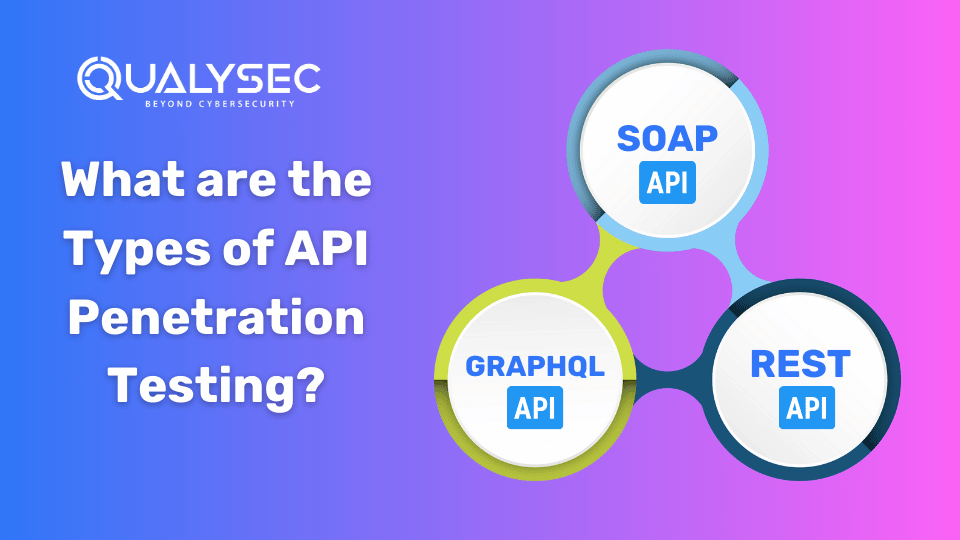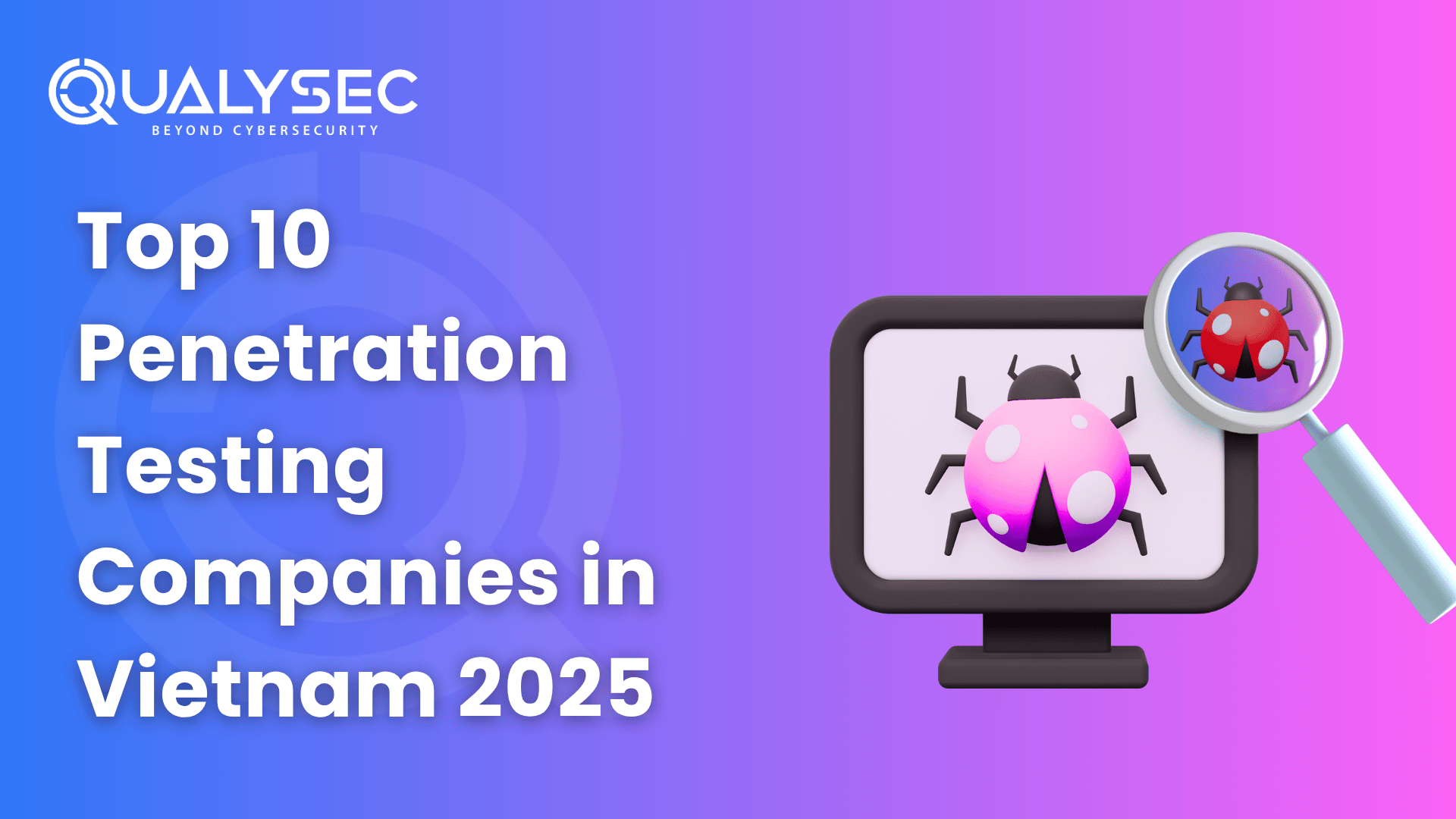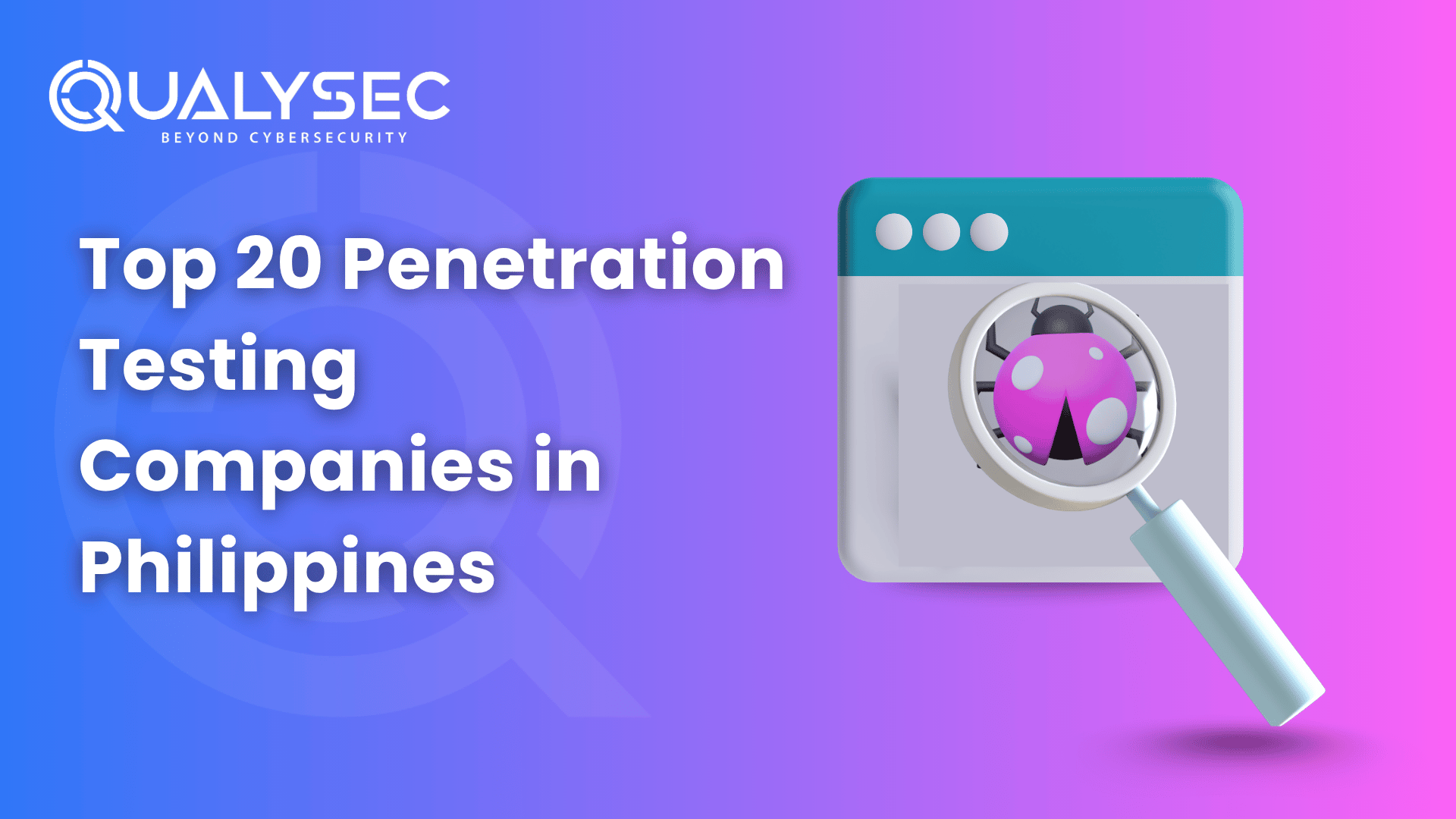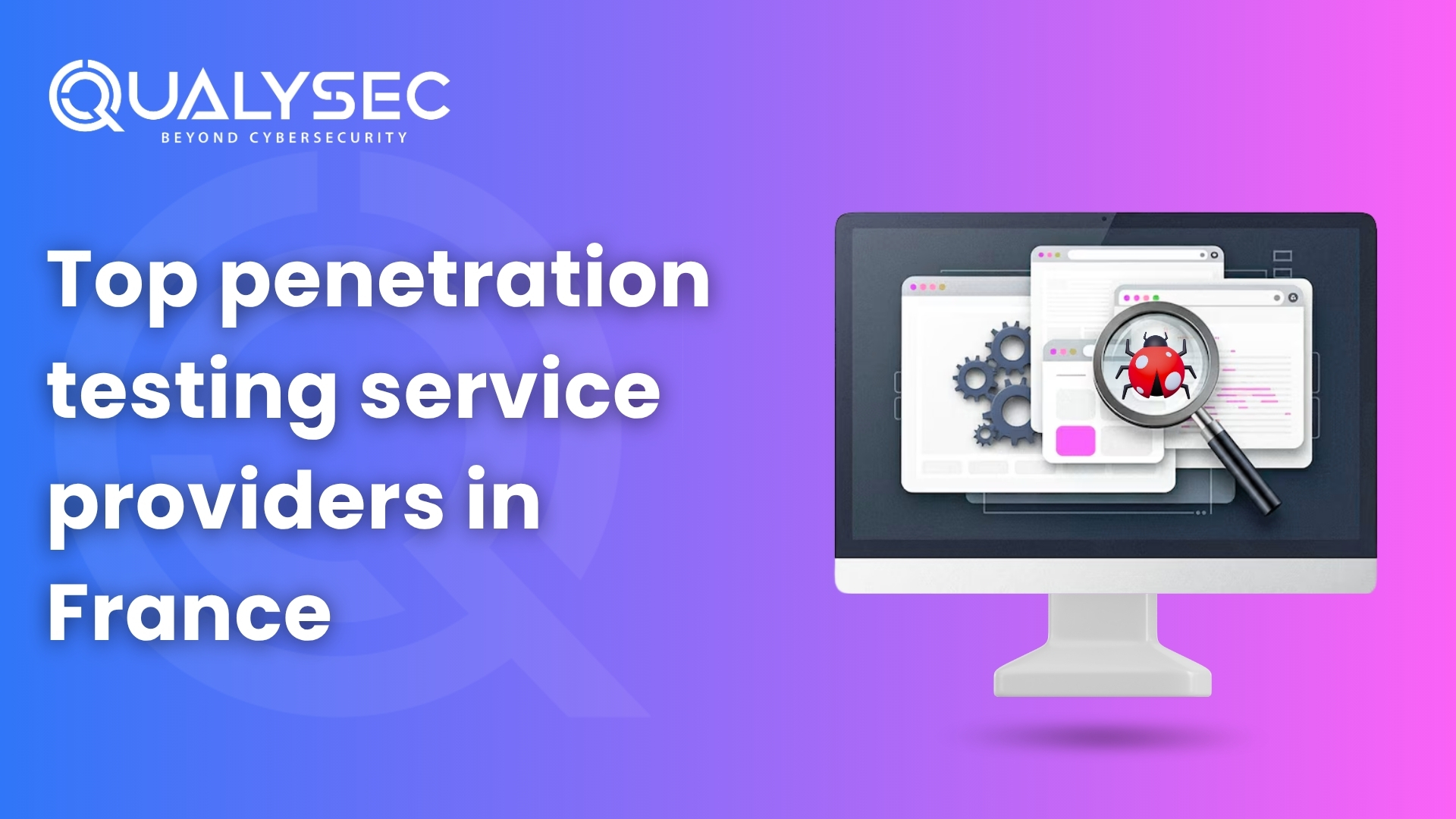APIs are attractive targets for attackers due to their vulnerability and vital nature, particularly when managing sensitive data. A considerable 58% of respondents strongly agree or agree that APIs increase the attack surface across all tiers of the technological stack. To reduce the danger of security breaches, deploying strong security measures, understanding the various forms of attacks, and analyzing their possible consequences are critical. There are numerous ways to secure APIs, today we’ll talk about one of the measures the Web API Penetration Testing.
In this post, we will discuss one of the strategies: Web API pen-testing. We’ll also cover the difference between normal API and Web API, the importance and benefits of securing APIs, the top vulnerabilities, how web API pentest is conducted, and the advanced Pentesting strategies. Keep reading to learn more.
The Difference Between Web API and Normal API Penetration Testing
API pentesting and Web API pentesting both involve assessing the security of APIs (Application Programming Interfaces), but they focus on different aspects and contexts. When securing your company’s digital assets, understanding the nuances between Web API and normal API penetration testing is crucial. Let’s break it down:
1. Scope and Focus:
-
- Web API Testing: Primarily focuses on APIs accessed via web protocols such as HTTP/HTTPS. This includes RESTful APIs commonly used in web and mobile applications.
- Normal API Testing: Encompasses a broader spectrum, including APIs that may not necessarily be web-based. It includes testing protocols like SOAP, MQTT, or even internal APIs within your network.
2. Communication Protocols:
-
- Web API Testing: Concentrates on APIs interacting over web protocols, utilizing HTTP methods for communication.
- Normal API Testing: Encompasses a wider range, covering APIs using diverse communication protocols beyond the web, ensuring a comprehensive security evaluation.
3. Security Concerns:
-
- Web API Testing: Emphasizes issues like injection attacks, authentication flaws, and improper access controls typically associated with web-based APIs.
- Normal API Testing: Expands the focus to include protocol-specific vulnerabilities, ensuring a thorough examination of potential risks in diverse API implementations.
Are you a business using APIs in your web applications and worried about their security? We at Qualysec have the best and most experienced penetration testers to secure it. Chat with us for FREE today!
Talk to our Cybersecurity Expert to discuss your specific needs and how we can help your business.
The Methodologies Used in Web API Security Testing
Companies can create their penetration testing processes and procedures; however, a few Web API security testing methodologies have become standard in the testing industry due to their effectiveness. They are:
Penetration Test Execution Standard (PTES)
Information security practitioners established this standard to provide an up-to-date guide for penetration testers and educate businesses on what to expect from a penetration test. Furthermore, PTES contains seven sections:
-
- Pre-engagement Interactions
- Intelligence gathering
- Threat Modeling
- Vulnerability Analysis
- Exploitation
- Post-exploitation Reporting
Open Web Application Security Project (OWASP)
OWASP provides enterprises with a wide list of web application vulnerability categories and ways to mitigate or resolve them. OWASP provides various resources to help improve the security posture of both internal and external web applications.
Open-Source Security Testing Methodology Manual (OSSTMM)
OSSTMM is a peer-reviewed methodology maintained by the Institute for Security and Open Methodologies (ISECOM) and updated every six months. Furthermore, OSSTMM offers instructions on how to test the security of the five operating channels. They are:
-
- Human Security
- Physical Security
- Wireless communication
- Telecommunication
- Data Networks
What are the types of API Penetration Testing?
A protocol is a collection of instructions and forms to be followed. APIs should also follow any of the API protocols described below:

SOAP (Simple Object Access Protocol)
SOAP is an XML document with four components: envelope, header, body, and fault. The World Wide Web Consortium (W3C) standardized SOAP. SOAP has strong regulations, which tightens security. Furthermore, it is very versatile and supports a variety of protocols, including HTTP. It is platform agnostic. The size of the message influences overall performance. Many legacy and financial apps continue to utilize SOAP.
GraphQL
GraphQL is a query language. Instead of delivering all the attributes in your answer, you may specify the values you anticipate. GraphQL supports various programming languages, including JS, Java, Python, C++, Perl, Ruby, and Scala. JSON is the recommended format for both payload and replies. There are numerous more benefits as well. Many developers began utilizing GraphQL for faster and easier implementation.
REST: Representational State Transfer
REST is more of a client-server design and is stateless. The Client and Server function as independent components. A resource-based strategy involves direct communication with the resource. REST communicates via HTTP/HTTPS requests. Furthermore, RESTful APIs are speedier, scalable, dependable, reusable, and favored in most newly produced apps.
Read more: Common Rest API Security Threats
Why is Web API Security Testing Important?
In the digital age, where seamless data exchange between applications is the norm, the significance of Web API security testing cannot be overstated. Furthermore, Web APIs serve as the conduits for sharing sensitive information, making them enticing targets for malicious actors.
Web API security testing is vital for regulatory compliance and maintaining stakeholder trust. By proactively addressing security concerns, companies can establish a resilient digital infrastructure that safeguards sensitive data and fosters confidence among users and partners.
-
- Web API security testing mitigates the risk of data breaches and unauthorized access.
- Ensures compliance with industry regulations and standards.
- Protects sensitive information and user privacy in the digital ecosystem.
- Identifies and addresses vulnerabilities, preventing potential exploits.
- Enhances stakeholder trust by demonstrating a commitment to robust cybersecurity practices.
The Benefits of Web API Security Testing
Here are some of the benefits of running Web API Penetration Testing on your online API:
1. Maintains Compliance
APIs, if misused, can expose sensitive personal and commercial data. Companies must obey regulations and standards, such as:
-
- HIPAA protects healthcare information.
- GDPR in Europe.
- PCI-DSS for payment card businesses.
Abusing the restrictions may result in a civil or criminal action by the regulatory authorities.
2. Prevents Cyberattacks
Penetration testing can detect vulnerabilities that, if exploited by hackers or other parties, might lead to cyberattacks. Furthermore, identified vulnerabilities may be patched to avoid hacks, saving money and reputation.
3. Helps in Finding API Vulnerabilities
API vulnerability testing aids in the discovery of flaws and vulnerabilities in API implementation. Active testing can aid with the early detection of problems, which can then be swiftly remedied to make the API more secure.
4. Aids in Data Protection
APIs frequently include sensitive data such as passwords, financial information, etc. Penetration testing API may assist in ensuring that it is appropriately secured from data leaks and breaches, preserving the integrity and confidentiality of the data assets.
5. Maintain Business Continuity
APIs are critical for sustaining linkages across different aspects of a web service. API security testing aids in maintaining security, hence averting mishaps or data breaches
6. Develops Trust and Dependability
Another advantage of API security testing is that it increases clients’ trust and confidence in your organization’s services and safety procedures. API security testing protects enterprises and consumers from security breaches and financial consequences.
Related: A Comprehensive Guide to API Penetration Testing
Web API Penetration Testing- 5 Steps of its Workflow
Here are the steps that the Web API penetration testing workflow containing all the phases of how the testing is done:
1. Reconnaissance
The testing team conducts reconnaissance by searching public sources for information on the target API. Examples of information obtained during reconnaissance include
-
- Code, keys, and comments
- Google-indexed API information
- Host setup details (if appropriate)
- Previously revealed vulnerabilities (if relevant)
The team will include relevant material from the final report concerning exploitable findings revealed during penetration testing.
2. Mapping
The team will map the behavior and data in the target API as the next stage in their technique. This task involves reviewing API documentation, including
-
- Open API or Swagger specifications
- Postman Collections
- Additional API documentation and sample requests (e.g., curl).
The major purpose of this phase is to understand the API endpoint inputs and how they affect the data returned in later requests. The testing team will get a good grasp of authentication mechanisms, including supplying API keys.
3. Discovery
During the API penetration test, the Testing team will utilize the information acquired in the previous phases to identify vulnerabilities in the target APIs. The testing team uses bespoke scripts, automated tools, and human testing to cover all API vulnerabilities, including less prevalent ones based on the API’s architecture and functionality.
4. Exploitation
Exploiting a vulnerability allows the team to assess the target’s commercial exposure accurately. Depending on the weaknesses uncovered, exploitation activities are frequently limited to the minimum needed to create a proof of concept so developers and security personnel can replicate the problem. If the found vulnerabilities allow access to the underlying system, the testers will repeat the process by doing reconnaissance on the server and network.
5. Reporting
The testing team methodically detects and categorizes vulnerabilities throughout the review, ensuring possible hazards are identified. Furthermore, a senior consultant conducts a high-level penetration test and evaluates the API penetration testing report.
This assures that testing techniques are of the greatest quality and that reports are accurate. This extensive documentation is invaluable for understanding the application’s security condition.
Key Report Components:
-
- Vulnerability Name: Specifies each vulnerability, such as SQL Injection, providing a precise identification.
- Likelihood, Impact, Severity: Quantifies the potential risk by assessing each vulnerability’s likelihood, impact, and severity.
- Description: Offers an overview of the vulnerability, enhancing comprehension for stakeholders.
- Consequence: Describes how each vulnerability could impact the application, emphasizing the importance of mitigation.
- Instances (URL/Place): Pinpoints the location of vulnerabilities, facilitating targeted remediation efforts.
- Step to Reproduce and POC: Provides a step-by-step guide and a Proof of Concept (POC) to validate and reproduce each vulnerability.
- Remediation: Offers actionable recommendations to effectively eliminate detected breaches, promoting a secure environment.
- CWE No.: Assigns Common Weakness Enumeration identifiers for precise classification and reference.
- OWASP TOP 10 Rank: Indicates the vulnerability’s ranking in the OWASP TOP 10, highlighting its significance in the current threat landscape.
- SANS Top 25 Rank: Indicates the vulnerability’s ranking in the SANS Top 25, further contextualizing its importance.
- Reference: Provides additional resources and references for a deeper understanding of vulnerabilities and potential remediation processes.
- Vulnerability Name: Specifies each vulnerability, such as SQL Injection, providing a precise identification.
Pentest reports are mandatory when it comes to adhering to compliance. We at Qualysec guarantee your compliance with our comprehensive report. Know Why? Take a look at the sample report.
Latest Penetration Testing Report

10 Vulnerabilities Uncovered by Web API pentesting
1. Unsafe API Consumption
Developers prefer to trust data obtained from third-party APIs more than user input, resulting in lower security requirements. In addition to compromising APIs, attackers target integrated third-party services rather than the target API.
2. Security Misconfiguration
APIs and associated systems sometimes have complicated settings to allow for customization. Software and DevOps engineers may overlook certain setups or fail to adhere to security best practices when configuring, allowing for various attacks.
3. Improper Inventory Management
Proper documentation is crucial for APIs, which expose several endpoints compared to typical web apps. A complete inventory of hosts and deployed API versions is also required to address issues like outdated API versions and exposed debug endpoints.
4. Unrestricted Access to Sensitive Business Flows
APIs prone to this risk expose a business flow, such as purchasing a ticket or publishing a remark, without accounting for how the capability may hurt the business if utilized excessively in an automated manner. Implementation errors only sometimes cause this.
5. Server-Side Request Forgery
Server-side request Forgery (SSRF) vulnerabilities can arise when an API retrieves a remote resource without verifying the user-supplied URI. This allows an attacker to force the application to submit a forged request to an unexpected location, even when a firewall or VPN protects it.
6. Broken Function Level Authorization
Complex access control rules with several hierarchies, groups, and roles and an unclear distinction between administrative and ordinary functions frequently result in authorization issues. By exploiting these flaws, attackers can access other users’ resources and administrative capabilities.
7. Unrestricted Resource Use
API requests demand network bandwidth, CPU, memory, and storage. Other resources, such as emails, SMS, phone calls, and biometric validation, are made available by service providers through API interfaces and charged per request. Successful assaults might result in denial of service or increased operating expenses.
8. Authentication is Broken
Authentication protocols are frequently built poorly, allowing attackers to compromise authentication tokens or exploit implementation vulnerabilities to temporarily or permanently assume other users’ identities. Compromising a system’s capacity to identify the client/user jeopardizes API security generally.
9. Broken Object Property Level Authorization
This category combines Excessive Data Exposure and Mass Assignment, concentrating on the underlying cause: a lack of or incorrect authorization validation at the object property level. This allows unauthorized parties to expose or manipulate information.
10. Broken Object Level Authorization
APIs provide endpoints that handle object IDs, leading to Object Level Access Control vulnerabilities. Every function that uses a user-supplied ID to access a data source should include object-level authorization checks.
7 Advanced Web API Pentesting Strategies
API breaches may be damaging for any firm. They can result in data loss, reputational harm, and even legal obligations. That is why it is critical to install effective security measures to prevent them in the first place. Here are a few Web API security steps to keep in mind to avoid security vulnerabilities:
1. Authenticate and Authorize
To limit access to API resources, you must first identify all relevant people and devices. Client-side apps often require a token in the API call so that the service can validate them.
2. Implement Access Controls
Organizations that wish to allow third parties to access internal data and systems via APIs must implement and verify controls to govern such access, including who, what, and when, as well as checks on data access, creation, update, and deletion (the zero-trust security model).
3. Encrypt the Requests and Answers
All network communication should be encrypted, especially API requests and answers, likely to contain sensitive credentials and data. All APIs should utilize and demand HTTPS. Enabling HTTP Strict Transport Security wherever feasible is preferable to diverting HTTP traffic to HTTPS, as API clients may not operate as intended.
4. Perform Regular Scans of APIs
API scans are a critical component of complete security assessments. They can assist in uncovering weaknesses that might otherwise go undetected. API scans can be done manually or using automated pentesting tools. Automated tools offer more complete coverage and may be performed more frequently.
5. Share Only the Relevant Information
API replies frequently provide the whole data record rather than just the relevant fields, requiring the client application to restrict what the user sees. This is lazy programming, which lowers response times and gives attackers more knowledge about the API and the resources it uses.
6. Choose Your Web Service API
There are two main ways to access web services using APIs: The Simple Object Access Protocol (SOAP), a communications protocol, and the Representational State Transfer API (REST API or RESTful API), a set of architectural principles for data transfer. They employ diverse formats and semantics, necessitating distinct methodologies for ensuring strong security.
7. Implement Real-time Monitoring
Implementing a real-time monitoring solution is the most effective strategy to safeguard your API against intrusions. By identifying and monitoring all potential data access points, you may detect breaches before they occur and prevent them from causing damage.
Why is Qualysec Technologies a Trusted Partner for Web API Pentesting?
In the ever-changing cybersecurity market, selecting a reliable partner for Web API penetration testing is critical. As organizations attempt to protect their digital assets from various attacks, a trustworthy and competent partner becomes critical to their security strategy. The ideal partner should have an established track record, extensive industry understanding, and a strong commitment to staying ahead of new threats.
Qualysec Technologies is an icon of excellence in cybersecurity. We are a reliable partner with an excellent reputation for providing thorough Web API penetration testing services. Our team of seasoned professionals combines technical expertise with a proactive approach, ensuring that all aspects of API security are thoroughly examined.
We are the best API penetration testing providers offering a hybrid approach (i.e., combine manual and automation testing) to identify vulnerabilities, deliver actionable insights, and enable enterprises to successfully strengthen their defenses. Our commitment to remaining current on the latest dangers distinguishes us as a dependable solution for businesses looking for more than simply a service provider to protect their digital infrastructure.
We offer a comprehensive and developer-friendly pentest report comprising all information about the vulnerabilities found and ways and references to mitigate them. We also provide consultation calls with the dev team if they face any issues mitigating the vulnerabilities.
Want to learn more? Fill out this form to contact us and learn what you need to test to secure your APIs.
Conclusion
In conclusion, safeguarding the integrity and security of web APIs is paramount in the digital age, where connectivity and data exchange form the backbone of modern applications. Advanced Web API pentesting strategies are pivotal in identifying and mitigating potential vulnerabilities that could compromise sensitive information.
Partnering with a seasoned cybersecurity firm can make a significant difference for businesses seeking to fortify their web APIs against evolving cyber threats. Qualysec specializes in cutting-edge Web API security testing solutions. Our expert team employs tools and methodologies to conduct thorough pentest, identifying and resolving vulnerabilities before they become exploits.
With a commitment to staying ahead of emerging threats, Qualysec empowers businesses to enhance their security posture and build trust with their users. By prioritizing advanced web API pentesting, companies protect their assets and demonstrate a dedication to cybersecurity excellence.
As the digital landscape evolves, investing in robust API security measures becomes essential to a holistic cybersecurity strategy. Partner with Qualysec to secure your web APIs and stay one step ahead in the ever-evolving realm of cyber threats. Contact us today!
FAQs-
1. What are the prerequisites for API Penetration?
Before API penetration testing, ensure access to API documentation, understanding of the authentication mechanisms, and appropriate testing tools. Knowledge of common web security concepts, such as OWASP Top 10, is beneficial.
2. How often do you conduct API penetration testing?
Conduct API penetration testing at least annually or whenever significant changes occur in the API. Regular testing ensures ongoing security, compliance, and early detection of potential vulnerabilities.
3. Who needs API penetration testing?
Any organization that develops or utilizes web APIs should invest in penetration testing. This includes software developers, IT administrators, and security professionals to ensure robust security measures.
4. Which authentication is best for Web API?
The choice depends on the use case, but OAuth 2.0 is widely accepted for its flexibility and robust security features. It allows secure, token-based authentication and authorization, making it a popular choice for many web APIs.


















































































































































































































































































































































0 Comments